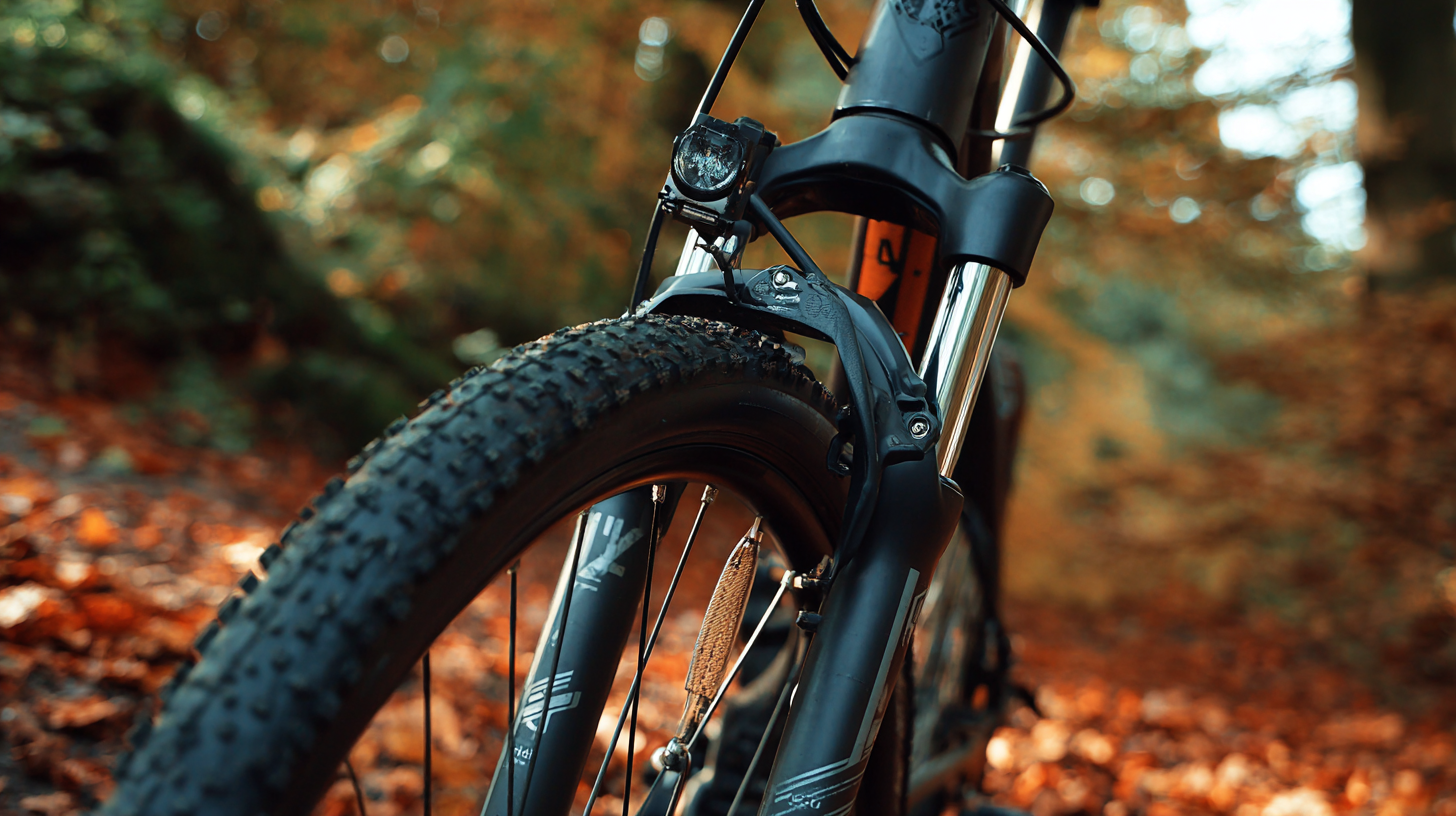When it comes to enhancing the ride quality of your bicycle, one of the most crucial components to consider is the Bicycle Front Suspension. This innovative technology plays a pivotal role in absorbing shocks from uneven terrain, ensuring a smoother and more enjoyable ride. However, not all bicycle front suspensions are created equal, and the impact of selecting a high-quality system can significantly affect performance, comfort, and overall riding experience.

In this blog, we will explore how the best bicycle front suspension contributes to ride quality, the factors that make a suspension system stand out, and the importance of finding a reputable supplier to meet your cycling needs. Whether you're an avid mountain biker or a casual rider, understanding these elements will help you make informed decisions for an enhanced cycling journey.
When considering the impact of front suspension on the overall ride quality in bicycles, it’s essential to understand how different suspension systems interact with various terrains. A quality front suspension can absorb shocks from bumps, rocks, and uneven surfaces, enhancing comfort for the rider. This translates to smoother handling and improved control, especially on rugged trails or during mountain biking adventures.
**Tip:** When selecting a bike, look for models featuring adjustable front suspension settings. This customization allows you to tailor the bike's responsiveness according to the terrain, whether you prefer a softer ride for casual trails or a stiffer setup for racing.
Furthermore, the weight and material of the suspension components play a crucial role in ride quality. Lighter materials can reduce the overall weight of the bike, leading to better performance and less fatigue during long rides. A well-designed front suspension system not only enhances comfort but can also improve overall cycling efficiency.
**Tip:** Regular maintenance of your front suspension will ensure optimal performance. Keep an eye on damping levels, and don’t hesitate to consult a professional if you notice any changes in how your bike handles rough terrain.
This chart illustrates the perceived ride quality improvements based on different front suspension types used in bicycles. Each type of suspension has been rated on a scale from 1 to 10, with 10 representing the highest ride quality.
When comparing
rigid versus suspended front forks,
the performance differential can be quite significant, especially on demanding gravel terrain.
Recent evaluations suggest that suspension forks enhance traction and offer improved control, which can translate to faster ride times on rough surfaces.
Studies indicate that riders with suspension forks can maintain
higher average speeds
when navigating through fluctuating gravel conditions, primarily due to better shock absorption and tire contact with the ground.
In addition, mounting evidence points to the adaptation of suspension technology in gravel bikes, with some models utilizing innovative designs that allow
the entire front cockpit to move vertically,
dampening the impacts from uneven surfaces. This feature not only cushions the rider but also maintains optimal wheel position, minimizing energy loss during climbs and descents.
In stark contrast, while rigid forks might be lighter and offer direct power transfer, they often fall short in comfort and stability
on rugged trails.
The ongoing debate in the cycling community emphasizes the necessity of balancing speed and ride quality, revealing that
suspended forks may indeed be a game-changer
for gravel enthusiasts aiming for versatility and performance on varied terrains.
When it comes to ride quality, the front suspension of a bicycle plays a crucial role. Modern suspension technologies, from coil springs to advanced air systems, significantly enhance comfort and control. According to the industry standard report by the Bicycle Product Suppliers Association, bicycles equipped with premium front suspension systems can improve impact absorption by up to 30%. This reduction in shock translates into a smoother ride, allowing cyclists to navigate rough terrains with ease.
Selecting the right suspension type can also affect performance. For instance, air suspension systems are often lighter and more adjustable than coil systems, making them a preferred choice for competitive riders. A study by Cycling Weekly highlighted that cyclists using air suspension reported a 25% increase in handling precision during technical descents. To maximize the benefits of your suspension, consider regular maintenance checks to ensure optimal performance.
Tips: Always adjust your suspension settings based on the terrain you'll be riding. For rugged trails, a softer setting may provide additional comfort, while firmer adjustments can enhance control on paved paths. Also, don’t hesitate to consult with local bike shops for tailored recommendations on suspension upgrades.

The design of a bicycle's front suspension plays a crucial role in determining riding comfort, influencing several key metrics such as shock absorption, stability, and overall handling. According to a report by the International Journal of Cycling Science, bicycles equipped with advanced suspension systems can reduce impact forces by up to 30%, drastically improving the rider's experience over rough terrain. This reduction in shock translates to less fatigue during long rides, allowing cyclists to maintain a higher level of performance over extended periods.
Furthermore, the geometry and technology of suspension systems can significantly affect rider feedback. Research conducted by the Bicycle Engineering Association suggests that bikes with adjustable suspension settings enable riders to customize their setup based on specific trail conditions, enhancing comfort and control. For instance, riders who frequently navigate uneven trails benefit from a more plush suspension setting, which can increase traction and confidence while descending steep gradients. This adaptability ensures that cyclists can optimize their ride comfort metrics in accordance with their personal preferences and riding styles.
In recent years, the demand for high-performance bicycles has surged, particularly regarding the integration of advanced suspension systems. According to a recent report from the National Bicycle Dealers Association (NBDA), nearly 60% of consumers now prioritize front suspension when selecting a bike, reflecting a significant shift in market preferences. The study highlights that riders are increasingly seeking models that offer enhanced ride quality, which is largely attributed to better shock absorption and overall comfort during rugged terrain rides.

